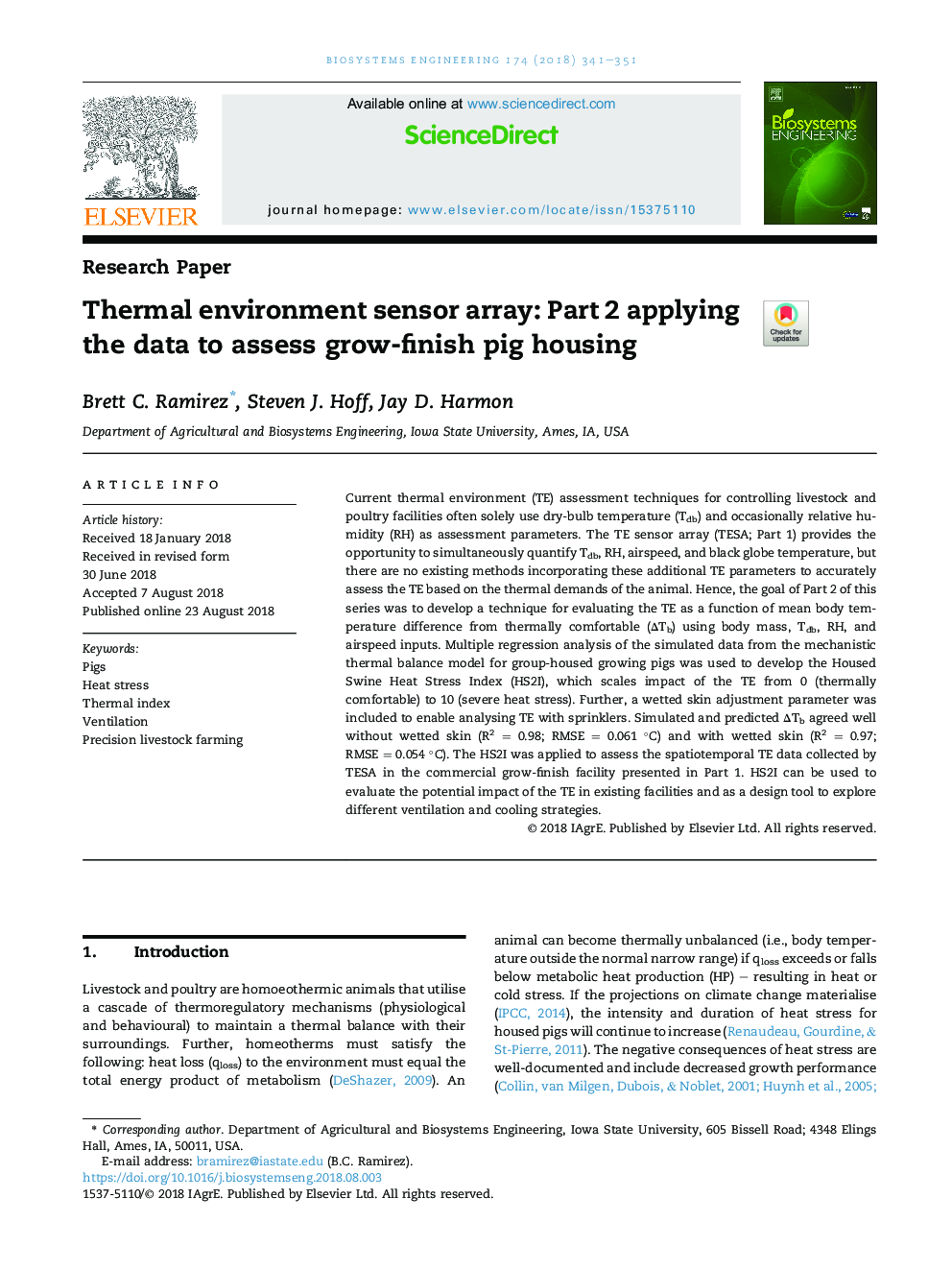| کد مقاله | کد نشریه | سال انتشار | مقاله انگلیسی | نسخه تمام متن |
|---|---|---|---|---|
| 11007250 | 1519488 | 2018 | 11 صفحه PDF | دانلود رایگان |
عنوان انگلیسی مقاله ISI
Thermal environment sensor array: Part 2 applying the data to assess grow-finish pig housing
ترجمه فارسی عنوان
آرایه سنسور محیط زیست: قسمت 2 استفاده از داده ها برای ارزیابی مسکن زباله رشد و پایان
دانلود مقاله + سفارش ترجمه
دانلود مقاله ISI انگلیسی
رایگان برای ایرانیان
کلمات کلیدی
خوک ها، استرس گرما، شاخص حرارتی، تهویه دامداری دقیق،
موضوعات مرتبط
مهندسی و علوم پایه
سایر رشته های مهندسی
کنترل و سیستم های مهندسی
چکیده انگلیسی
Current thermal environment (TE) assessment techniques for controlling livestock and poultry facilities often solely use dry-bulb temperature (Tdb) and occasionally relative humidity (RH) as assessment parameters. The TE sensor array (TESA; Part 1) provides the opportunity to simultaneously quantify Tdb, RH, airspeed, and black globe temperature, but there are no existing methods incorporating these additional TE parameters to accurately assess the TE based on the thermal demands of the animal. Hence, the goal of Part 2 of this series was to develop a technique for evaluating the TE as a function of mean body temperature difference from thermally comfortable (ÎTb) using body mass, Tdb, RH, and airspeed inputs. Multiple regression analysis of the simulated data from the mechanistic thermal balance model for group-housed growing pigs was used to develop the Housed Swine Heat Stress Index (HS2I), which scales impact of the TE from 0 (thermally comfortable) to 10 (severe heat stress). Further, a wetted skin adjustment parameter was included to enable analysing TE with sprinklers. Simulated and predicted ÎTb agreed well without wetted skin (R2 = 0.98; RMSE = 0.061 °C) and with wetted skin (R2 = 0.97; RMSE = 0.054 °C). The HS2I was applied to assess the spatiotemporal TE data collected by TESA in the commercial grow-finish facility presented in Part 1. HS2I can be used to evaluate the potential impact of the TE in existing facilities and as a design tool to explore different ventilation and cooling strategies.
ناشر
Database: Elsevier - ScienceDirect (ساینس دایرکت)
Journal: Biosystems Engineering - Volume 174, October 2018, Pages 341-351
Journal: Biosystems Engineering - Volume 174, October 2018, Pages 341-351
نویسندگان
Brett C. Ramirez, Steven J. Hoff, Jay D. Harmon,
